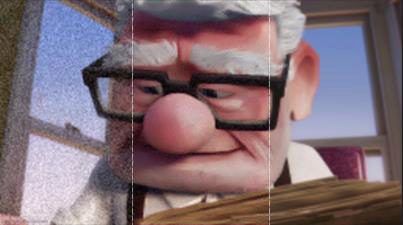Image Denoising Using A Generative Adversarial Network
March 14th, 2019
Categories: Animation, Software, Deep Learning

Authors
Alsaiari, A., Rustagi, R., Alhakamy, A., Thomas, M.M., Forbes, A.G.About
Animation studios render 3D scenes using a technique called path tracing which enables them to create high quality photorealistic frames. Path tracing involves shooting 1000’s of rays into a pixel randomly (Monte Carlo) which will then hit the objects in the scene and, based on the reflective property of the object, these rays reflect or refract or get absorbed. The colors returned by these rays are averaged to determine the color of the pixel. This process is repeated for all the pixels. Due to the computational complexity it might take 8-16 hours to render a single frame. We implemented a neural network-based solution to reduce the time it takes to render a frame to less than a second using a generative adversarial network (GAN), once the network is trained. The main idea behind this proposed method is to render the image using a much smaller number of samples per pixel than is normal for path tracing (e.g., 1, 4, or 8 samples instead of, say, 32,000 samples) and then pass the noisy, incompletely rendered image to our network, which is capable of generating a high-quality photorealistic image.
Keywords: image denoising, rendering, deep learning
Resources
URL
Citation
Alsaiari, A., Rustagi, R., Alhakamy, A., Thomas, M.M., Forbes, A.G., Image Denoising Using A Generative Adversarial Network, 2019 IEEE 2nd International Conference on Information and Computer Technologies (ICICT), Kahului, HI, USA, IEEE, March 14th, 2019. https://doi.org/10.1109/INFOCT.2019.8710893